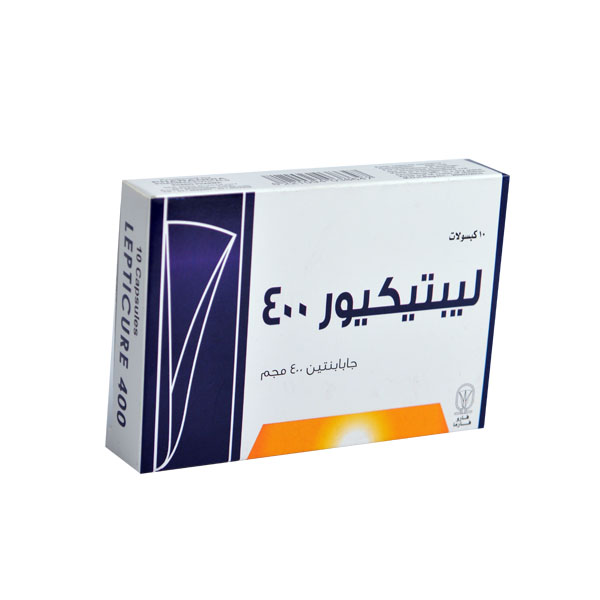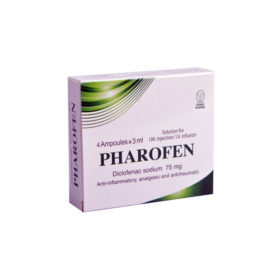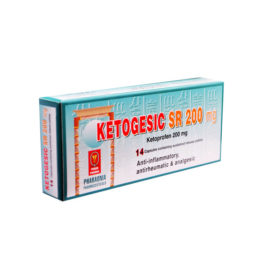Description
Pharmaceutical form
Hard gelatin capsules
Clinical particulars
Therapeutic indications
Clinical particulars
Epilepsy
Gabapentin is indicated as adjunctive therapy in the treatment of partial seizures with and without secondary generalization in adults and children aged 6 years and above.
Gabapentin is indicated as monotherapy in the treatment of partial seizures with and without secondary generalization in adults and adolescents aged 12 years and above.
Treatment of peripheral neuropathic pain
Gabapentin is indicated for the treatment of peripheral neuropathic pain such as painful diabetic neuropathy and post-herpetic neuralgia in adults.
Posology and method of administration
For oral use.
Gabapentin can be given with or without food and should be swallowed whole with sufficient fluid-intake (e.g. a glass of water).
For all indications a titration scheme for the initiation of therapy is described in Table 1, which is recommended for adults and adolescents aged 12 years and above. Dosing instructions for children under 12 years of age are provided under a separate sub-heading later in this section.
Table 1
DOSING CHART – INITIAL TITRATION
Day 1
Day 2
Day 3
300 mg once a day
300 mg two times a day
300 mg three times a day
Discontinuation of gabapentin
In accordance with current clinical practice, if gabapentin has to be discontinued it is recommended this should be done gradually over a minimum of 1 week independent of the indication.
Epilepsy
Epilepsy typically requires long-term therapy. Dosage is determined by the treating physician according to individual tolerance and efficacy.
Adults and adolescents:
In clinical trials, the effective dosing range was 900 to 3600 mg/day. Therapy may be initiated by titrating the dose as described in Table 1 or by administering 300 mg three times a day (TID) on Day 1. Thereafter, based on individual patient response and tolerability, the dose can be further increased in 300 mg/day increments every 2-3 days up to a maximum dose of 3600 mg/day. Slower titration of gabapentin dosage may be appropriate for individual patients. The minimum time to reach a dose of 1800 mg/day is one week, to reach 2400 mg/day is a total of 2 weeks, and to reach 3600 mg/day is a total of 3 weeks. Dosages up to 4800 mg/day have been well tolerated in long-term open-label clinical studies. The total daily dose should be divided in three single doses, the maximum time interval between the doses should not exceed 12 hours to prevent breakthrough convulsions.
Children aged 6 years and above:
The starting dose should range from 10 to 15 mg/kg/day and the effective dose is reached by upward titration over a period of approximately three days. The effective dose of gabapentin in children aged 6 years and older is 25 to 35 mg/kg/day. Dosages up to 50 mg/kg/day have been well tolerated in a long-term clinical study. The total daily dose should be divided in three single doses, the maximum time interval between doses should not exceed 12 hours.
It is not necessary to monitor gabapentin plasma concentrations to optimize gabapentin therapy. Further, gabapentin may be used in combination with other antiepileptic medicinal products without concern for alteration of the plasma concentrations of gabapentin or serum concentrations of other antiepileptic medicinal products.
Peripheral neuropathic pain
Adults
The therapy may be initiated by titrating the dose as described in Table 1. Alternatively, the starting dose is 900 mg/day given as three equally divided doses. Thereafter, based on individual patient response and tolerability, the dose can be further increased in 300 mg/day increments every 2-3 days up to a maximum dose of 3600 mg/day. Slower titration of gabapentin dosage may be appropriate for individual patients. The minimum time to reach a dose of 1800 mg/day is one week, to reach 2400 mg/day is a total of 2 weeks, and to reach 3600 mg/day is a total of 3 weeks.
In the treatment of peripheral neuropathic pain such as painful diabetic neuropathy and post-herpetic neuralgia, efficacy and safety have not been examined in clinical studies for treatment periods longer than 5 months. If a patient requires dosing longer than 5 months for the treatment of peripheral neuropathic pain, the treating physician should assess the patient’s clinical status and determine the need for additional therapy.
Instruction for all areas of indication
In patients with poor general health, i.e., low body weight, after organ transplantation etc., the dose should be titrated more slowly, either by using smaller dosage strengths or longer intervals between dosage increases.
Use in elderly patients (over 65 years of age)
Elderly patients may require dosage adjustment because of declining renal function with age (see Table 2). Somnolence, peripheral oedema and asthenia may be more frequent in elderly patients.
Use in patients with renal impairment
Dosage adjustment is recommended in patients with compromised renal function as described in Table 2 and/or those undergoing haemodialysis. Gabapentin 100 mg capsules can be used to follow dosing recommendations for patients with renal insufficiency.
Table 2
Dosage of Gabapentin in Adults Based on Renal Function
Creatinine Clearance (ml/min)
Total Daily Dosea (mg/day)
≥80
900-3600
50-79
600-1800
30-49
300-900
15-29
150b-600
<15c
150b-300
a Total daily dose should be administered as three divided doses. Reduced dosages are for patients with renal impairment (creatinine clearance < 79 ml/min).
b To be administered as 300 mg every other day.
c For patients with creatinine clearance <15 ml/min, the daily dose should be reduced in proportion to creatinine clearance (e.g., patients with a creatinine clearance of 7.5 ml/min should receive one-half the daily dose that patients with a creatinine clearance of 15 ml/min receive).
Use in patients undergoing haemodialysis
For anuric patients undergoing haemodialysis who have never received gabapentin, a loading dose of 300 to 400 mg, then 200 to 300 mg of gabapentin following each 4 hours of haemodialysis, is recommended. On dialysis-free days, there should be no treatment with gabapentin.
For renally impaired patients undergoing haemodialysis, the maintenance dose of gabapentin should be based on the dosing recommendations found in Table 2. In addition to the maintenance dose, an additional 200 to 300 mg dose following each 4-hour haemodialysis treatment is recommended.
Contraindications
Hypersensitivity to the active substance or to any of the excipients.
Special warnings and precautions for use
Suicidal ideation and behaviour have been reported in patients treated with antiepileptic agents in several indications. A meta-analysis of randomised placebo controlled trials of anti-epileptic drugs has also shown a small increased risk of suicidal ideation and behaviour. The mechanism of this risk is not known and the available data do not exclude the possibility of an increased risk for gabapentin.
Therefore patients should be monitored for signs of suicidal ideation and behaviours and appropriate treatment should be considered. Patients (and caregivers of patients) should be advised to seek medical advice should signs of suicidal ideation or behaviour emerge.
If a patient develops acute pancreatitis under treatment with gabapentin, discontinuation of gabapentin should be considered.
Although there is no evidence of rebound seizures with gabapentin, abrupt withdrawal of anticonvulsants in epileptic patients may precipitate status epilepticus.
As with other antiepileptic medicinal products, some patients may experience an increase in seizure frequency or the onset of new types of seizures with gabapentin.
As with other anti-epileptics, attempts to withdraw concomitant anti-epileptics in treatment refractive patients on more than one anti-epileptic, in order to reach gabapentin monotherapy have a low success rate.
Gabapentin is not considered effective against primary generalized seizures such as absences and may aggravate these seizures in some patients. Therefore, gabapentin should be used with caution in patients with mixed seizures including absences.
No systematic studies in patients 65 years or older have been conducted with gabapentin. In one double blind study in patients with neuropathic pain, somnolence, peripheral oedema and asthenia occurred in a somewhat higher percentage in patients aged 65 years or above, than in younger patients. Apart from these findings, clinical investigations in this age group do not indicate an adverse event profile different from that observed in younger patients.
The effects of long-term (greater than 36 weeks) gabapentin therapy on learning, intelligence, and development in children and adolescents have not been adequately studied. The benefits of prolonged therapy must therefore be weighed against the potential risks of such therapy.
Drug Rash with Eosinophilia and Systemic Symptoms (DRESS)
Severe, life-threatening, systemic hypersensitivity reactions such as Drug rash with eosinophilia and systemic symptoms (DRESS) have been reported in patients taking antiepileptic drugs including gabapentin.
It is important to note that early manifestations of hypersensitivity, such as fever or lymphadenopathy, may be present even though rash is not evident. If such signs or symptoms are present, the patient should be evaluated immediately. Gabapentin should be discontinued if an alternative etiology for the signs or symptoms cannot be established.
Laboratory tests
False positive readings may be obtained in the semi-quantitative determination of total urine protein by dipstick tests. It is therefore recommended to verify such a positive dipstick test result by methods based on a different analytical principle such as the Biuret method, turbidimetric or dye-binding methods, or to use these alternative methods from the beginning.
• This product contains lactose.
If you have been told by your doctor that you have an intolerance to some sugars, contact your doctor before taking this medicinal product.
Interaction with other medicinal products and other forms of interaction
No interaction between gabapentin and phenobarbital, phenytoin, valproic acid, or carbamazepine has been observed.
Coadministration of gabapentin with oral contraceptives containing norethindrone and/or ethinyl estradiol, does not influence the steady-state pharmacokinetics of either component.
Coadministration of gabapentin with antacids containing aluminium and magnesium, reduces gabapentin bioavailability up to 24%. It is recommended that gabapentin be taken at the earliest two hours following antacid administration.
Renal excretion of gabapentin is unaltered by probenecid.
A slight decrease in renal excretion of gabapentin that is observed when it is coadministered with cimetidine is not expected to be of clinical importance.
Fertility, pregnancy and lactation
Risk related to epilepsy and antiepileptic medicinal products in general
The risk of birth defects is increased by a factor of 2 – 3 in the offspring of mothers treated with an antiepileptic medicinal product. Most frequently reported are cleft lip, cardiovascular malformations and neural tube defects. Multiple antiepileptic drug therapy may be associated with a higher risk of congenital malformations than monotherapy, therefore it is important that monotherapy is practised whenever possible. Specialist advice should be given to women who are likely to become pregnant or who are of childbearing potential and the need for antiepileptic treatment should be reviewed when a woman is planning to become pregnant. No sudden discontinuation of antiepileptic therapy should be undertaken as this may lead to breakthrough seizures, which could have serious consequences for both mother and child. Developmental delay in children of mothers with epilepsy has been observed rarely. It is not possible to differentiate if the developmental delay is caused by genetic, social factors, maternal epilepsy or the antiepileptic therapy.
Risk related to gabapentin
There are no adequate data from the use of gabapentin in pregnant women.
Studies in animals have shown reproductive toxicity.
The potential risk for humans is unknown. Gabapentin should not be used during pregnancy unless the potential benefit to the mother clearly outweighs the potential risk to the foetus.
No definite conclusion can be made as to whether gabapentin is associated with an increased risk of congenital malformations when taken during pregnancy, because of epilepsy itself and the presence of concomitant antiepileptic medicinal products during each reported pregnancy.
Gabapentin is excreted in human milk. Because the effect on the breast-fed infant is unknown, caution should be exercised when gabapentin is administered to a breast-feeding mother. Gabapentin should be used in breast-feeding mothers only if the benefits clearly outweigh the risks.
Effects on ability to drive and use machines
Gabapentin may have minor or moderate influence on the ability to drive and use machines. Gabapentin acts on the central nervous system and may cause drowsiness, dizziness or other related symptoms. Even, if they were only of mild or moderate degree, these undesirable effects could be potentially dangerous in patients driving or operating machinery. This is especially true at the beginning of the treatment and after increase in dose.
Undesirable effects
Infections and infestations
Very Common:
Viral infection
Common:
Pneumonia, respiratory infection, urinary tract infection, infection, otitis media
Blood and lymphatic system disorders
Common:
leucopenia
Not known:
thrombocytopenia
Immune system disorders
Uncommon:
allergic reactions (e.g. urticaria)
Not known:
hypersensitivity syndrome, a systemic reaction with a variable presentation that can include fever, rash, hepatitis, lymphadenopathy, eosinophilia, and sometimes other signs and symptoms
Metabolism and nutrition disorders
Common:
anorexia, increased appetite
Psychiatric disorders
Common:
hostility, confusion and emotional lability, depression, anxiety, nervousness, thinking abnormal
Not known:
hallucinations
Nervous system disorders
Very common:
somnolence, dizziness, ataxia,
Common:
convulsions, hyperkinesias, dysarthria, amnesia, tremor, insomnia, headache, sensations such as paresthesia, hypaesthesia, coordination abnormal, nystagmus, increased, decreased, or absent reflexes,
Uncommon:
hypokinesia
Not known:
other movement disorders (e.g. choreoathetosis, dyskinesia, dystonia)
Eye disorders
Common:
visual disturbances such as amblyopia, diplopia
Ear and labyrinth disorders
Common:
vertigo
Not known:
tinnitus
Cardiac disorders
Uncommon:
palpitations
Vascular disorders
Common:
hypertension, vasodilatation
Respiratory, thoracic and mediastinal disorders
Common:
dyspnoea, bronchitis, pharyngitis, cough, rhinitis
Gastrointestinal disorders
Common:
vomiting, nausea, dental abnormalities, gingivitis, diarrhoea, abdominal pain, dyspepsia, constipation, dry mouth or throat, flatulence
Not known:
pancreatitis
Hepatobiliary disorders
Not known:
hepatitis, jaundice
Skin and subcutaneous tissue disorders
Common:
facial oedema, purpura most often described as bruises resulting from physical trauma, rash, pruritus, acne
Not known:
Stevens-Johnson syndrome, angioedema, erythema multiforme, alopecia, drug rash with eosinophilia and systemic symptoms (see section 4.4)
Musculoskeletal and connective tissue disorders
Common:
arthralgia, myalgia, back pain, twitching
Not known:
rhabdomyolysis, myoclonus
Renal and urinary disorders
Not known:
acute renal failure, incontinence
Reproductive system and breast disorders
Common:
impotence
Not known:
breast hypertrophy, gynaecomastia
General disorders and administration site conditions
Very common:
fatigue, fever
Common:
peripheral oedema, abnormal gait, asthenia, pain, malaise, flu syndrome
Uncommon:
generalized oedema
Not known:
withdrawal reactions (mostly anxiety, insomnia, nausea, pains, sweating), chest pain. Sudden unexplained deaths have been reported where a causal relationship to treatment with gabapentin has not been established.
Investigations
Common:
WBC (white blood cell count) decreased, weight gain
Uncommon:
elevated liver function tests SGOT (AST), SGPT (ALT) and bilirubin
Not known:
blood glucose fluctuations in patients with diabetes, blood creatine phosphokinase increased
Injury, poisoning and procedural complications
Common:
accidental injury, fracture, abrasion
Under treatment with gabapentin cases of acute pancreatitis were reported. Causality with gabapentin is unclear.
In patients on haemodialysis due to end-stage renal failure, myopathy with elevated creatine kinase levels has been reported.
Overdose
Acute, life-threatening toxicity has not been observed with gabapentin overdoses of up to 49 grams. Symptoms of the overdoses included dizziness, double vision, slurred speech, drowsiness, lethargy and mild diarrhoea. All patients recovered fully with supportive care. Reduced absorption of gabapentin at higher doses may limit drug absorption at the time of overdosing and, hence, minimize toxicity from overdoses.
Overdoses of gabapentin, particularly in combination with other CNS depressant medications, may result in coma.
Although gabapentin can be removed by haemodialysis, based on prior experience it is usually not required. However, in patients with severe renal impairment, haemodialysis may be indicated.
An oral lethal dose of gabapentin was not identified in mice and rats given doses as high as 8000 mg/kg. Signs of acute toxicity in animals included ataxia, laboured breathing, ptosis, hypoactivity, or excitation.
Pharmacological properties
Pharmacodynamic properties
Pharmacotherapeutic groups: Other antiepileptics
The precise mechanism of action of gabapentin is not known.
Gabapentin is structurally related to the neurotransmitter GABA (gamma-aminobutyric acid) but its mechanism of action is different from that of several other active substances that interact with GABA synapses including valproate, barbiturates, benzodiazepines, GABA transaminase inhibitors, GABA uptake inhibitors, GABA agonists, and GABA prodrugs. In vitro studies with radiolabeled gabapentin have characterized a novel peptide binding site in rat brain tissues including neocortex and hippocampus that may relate to anticonvulsant and analgesic activity of gabapentin and its structural derivatives.
The binding site for gabapentin has been identified as the alpha2-delta subunit of voltage-gated calcium channels.
Gabapentin at relevant clinical concentrations does not bind to other common drug or neurotransmitter receptors of the brain including GABAA, GABAB, benzodiazepine, glutamate, glycine or N-methyl-d-aspartate receptors.
Gabapentin does not interact with sodium channels in vitro and so differs from phenytoin and carbamazepine. Gabapentin partially reduces responses to the glutamate agonist N-methyl-D-aspartate (NMDA) in some test systems in vitro, but only at concentrations greater than 100 µM, which are not achieved in vivo. Gabapentin slightly reduces the release of monoamine neurotransmitters in vitro. Gabapentin administration to rats increases GABA turnover in several brain regions in a manner similar to valproate sodium, although in different regions of brain. The relevance of these various actions of gabapentin to the anticonvulsant effects remains to be established. In animals, gabapentin readily enters the brain and prevents seizures from maximal electroshock, from chemical convulsants including inhibitors of GABA synthesis, and in genetic models of seizures.
Pharmacokinetic properties
Absorption
Following oral administration, peak plasma gabapentin concentrations are observed within 2 to 3 hours. Gabapentin bioavailability (fraction of dose absorbed) tends to decrease with increasing dose. Absolute bioavailability of a 300 mg capsule is approximately 60%. Food, including a high-fat diet, has no clinically significant effect on gabapentin pharmacokinetics.
Gabapentin pharmacokinetics are not affected by repeated administration. Although plasma gabapentin concentrations were generally between 2 µg/ml and 20 µg/ml in clinical studies, such concentrations were not predictive of safety or efficacy. Pharmacokinetic parameters are given in Table 3.
Table 3
Summary of gabapentin mean (%CV) steady-state pharmacokinetic parameters following every eight hours administration
Pharmacokinetic parameter
300 mg
(N = 7)
400 mg
(N = 14)
800 mg
(N=14)
Mean
%CV
Mean
%CV
Mean
%CV
Cmax (μg/ml)
4.02
(24)
5.74
(38)
8.71
(29)
tmax (hr)
2.7
(18)
2.1
(54)
1.6
(76)
T1/2 (hr)
5.2
(12)
10.8
(89)
10.6
(41)
AUC (0-8) μg•hr/ml)
24.8
(24)
34.5
(34)
51.4
(27)
Ae% (%)
NA
NA
47.2
(25)
34.4
(37)
Cmax = Maximum steady state plasma concentration
tmax = Time for Cmax
T1/2 = Elimination half-life
AUC(0-8) = Steady state area under plasma concentration-time curve from time 0 to 8 hours postdose
Ae% = Percent of dose excreted unchanged into the urine from time 0 to 8 hours postdose
NA = Not available
Distribution
Gabapentin is not bound to plasma proteins and has a volume of distribution equal to 57.7 litres. In patients with epilepsy, gabapentin concentrations in cerebrospinal fluid (CSF) are approximately 20% of corresponding steady-state trough plasma concentrations. Gabapentin is present in the breast milk of breast-feeding women.
Biotransformation
There is no evidence of gabapentin metabolism in humans. Gabapentin does not induce hepatic mixed function oxidase enzymes responsible for drug metabolism.
Elimination
Gabapentin is eliminated unchanged solely by renal excretion. The elimination half-life of gabapentin is independent of dose and averages 5 to 7 hours.
In elderly patients, and in patients with impaired renal function, gabapentin plasma clearance is reduced. Gabapentin elimination-rate constant, plasma clearance, and renal clearance are directly proportional to creatinine clearance.
Gabapentin is removed from plasma by haemodialysis. Dosage adjustment in patients with compromised renal function or undergoing haemodialysis is recommended (see section 4.2).
Gabapentin pharmacokinetics in children were determined in 50 healthy subjects between the ages of 1 month and 12 years. In general, plasma gabapentin concentrations in children > 5 years of age are similar to those in adults when dosed on a mg/kg basis.
In a pharmacokinetic study in 24 healthy paediatric subjects aged between 1 month and 48 months, an approximately 30% lower exposure (AUC), lower Cmax and higher clearance per body weight have been observed in comparison to available reported data in children older than 5 years.
Linearity/Non-linearity
Gabapentin bioavailability (fraction of dose absorbed) decreases with increasing dose which imparts non-linearity to pharmacokinetic parameters which include the bioavailability parameter (F) e.g. Ae%, CL/F, Vd/F. Elimination pharmacokinetics (pharmacokinetic parameters which do not include F such as CLr and T1/2), are best described by linear pharmacokinetics. Steady state plasma gabapentin concentrations are predictable from single-dose data.
storage:
Store at a temperature not exceeding 30C, in dry place.
Keep out f reach of children.
Pack:
Lepticure 100 mg: A carton box containing 20 capsules in two (PVC/AL) strips and an inner leaflet.
Lepticure 300 & 400 mg: A carton box containing one (PVC/AL) strip of 10 capsules and an inner leaflet.








Reviews
There are no reviews yet.